- Delivery from stock
- 14 days on trial
- Expert advice from experts
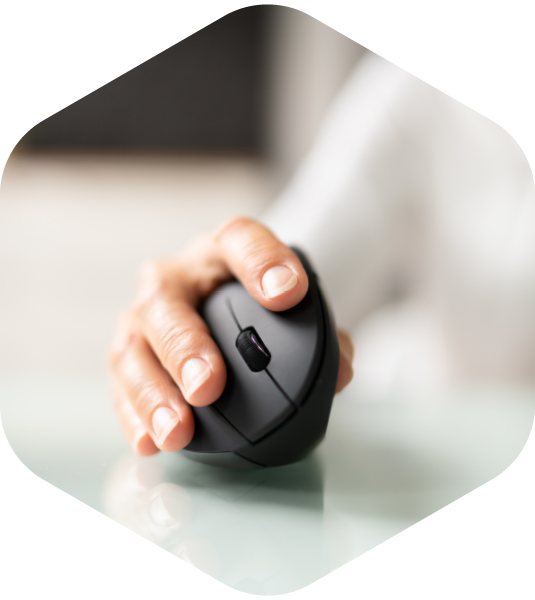
Resultaat 49–53 van de 53 resultaten wordt getoondGesorteerd op populariteit
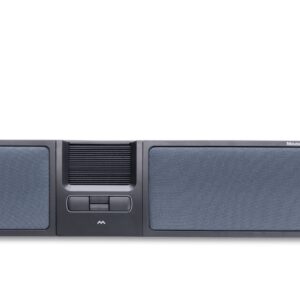
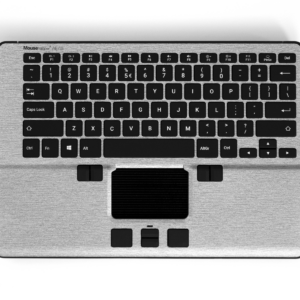
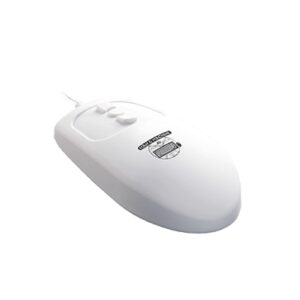
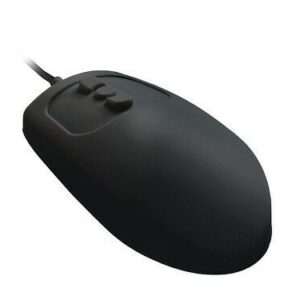

Research by Pepper and Harvey (1997) at the University of San Francisco demonstrated the relationship between keyboard width and muscle tension in the neck, back, arms and wrists. Mouse users primarily report tension complaints in the neck, back and arms. These complaints are exacerbated by the high tension caused when the cursor needs to be moved more precisely. Many mouse users hold the index finger still just above the mouse surface, in tense anticipation of the next mouse click. This is another cause of chronic tension in the hand and wrist joint up to the shoulder/neck area.
The effect goes even further, as high chest breathing is also a result of tense mouse use. A better work method is to take a micro-pause every time you read or wait to do the next action. Use the "wait time" to drop your hands in your lap to rest for a moment. Look past the screen into the distance to rest the eyes as well. In this way, recovery can take place, which helps relax the muscles.
Over time, "mouse abuse" can lead to irritation of muscles and tendons, reduced blood flow to the tissues in the hand, arm and shoulder. Before you know it, you may suffer from chronic overuse, also known as "mouse arm." However, it doesn't have to come to that!
Do you work at a laptop or PC for hours every day? It is almost inevitable in this day and age that you spend a lot of time behind the PC. Then an ergonomic mouse is a logical choice. Choosing an ergonomic mouse is not easy. The range with all the differences is large, we understand that it is difficult to make a good choice from the large selection. The best ergonomic mouse adapts to your work, hand size and possible complaint. How can you choose the ideal mouse from our large selection? With the following questions we think you can better determine for yourself what the best mouse is.
Not every ergonomic mouse is effective for the same complaints. Different models subtly provide just different results in preventing and reducing complaints.
The intensity of mouse use can determine your choice. With high intensity (such as drawing work, for example), the quality, extra functionality, alignment with your hand size and user-friendliness is a bigger factor than with regular mouse use.
The type of work you perform daily with the mouse is important in making a good choice. With frequent precision mouse use, it is more important to choose a model that suits these activities. On the product pages you can find more information about whether mice are suitable for precision work, for example.
The ergonomic mouse is very versatile and there is a wide range of different ergonomic mice. With wire or wireless, right-handed or left-handed, different sizes of mice so you always have the choice to find a mouse that suits you. Backshop's offer is characterized by several groups; the vertical mouse, trackpad mouse, roller mouse, bluetooth mouse and 45 degree mouse are the most common ergonomic mice. We briefly explain the main differences between the various models below.
A vertical ergonomic mouse is a responsible choice to address incipient overuse complaints especially in the forearm and wrist. The hand, wrist and forearm are forced into a vertical position, which will reduce muscle tension in the arm up to the elbow. Examples of a vertical mouse are the Evoluent mouse or Ergofy SRM mouse.
Also called a 45-degree mouse, an ergonomic neutral mouse provides a relaxed feeling in the hand and wrist. The hand "rests" on the mouse at an angle of about 45 degrees, preventing pinching. With a support at the palm of the hand, greater movement is made, relaxing the smaller muscles in the hand and arm. These types of mice have a proven positive effect on hand, neck and shoulder pain. Examples of a neutral mouse are the Newtral mouse or Handshoemouse.
A centrally positioned mouse provides the most optimal working posture, with both the mouse and keyboard operated within shoulder width. In addition, many central mice have additional buttons, which speed up common operations such as cutting, pasting and copying. It also distributes work between both hands, preventing finger strain. Examples of the centrally positioned mouse are a roller mouse or trackpad/touchpad mouse.
For example, an alternative solution for computer users with severe RSI/CANS issues is to use a foot-pedal mouse with which repeated clicking movements are taken over by the feet. A drawing tablet can also provide a solution when finger and hand function are limited. These categories are, of course, also recommended preventively.
A good ergonomic mouse is designed to reduce muscle tension during use. Backshop supplies many types of ergonomic mice, it is important for you to find out which mouse best suits your work, hand size and any limitations.
A good ergonomic computer mouse provides comfort. It fits snugly to the size of your hand. An ergonomic mouse helps you work from the wrist as little as possible, supports the forearm at a 90-degree angle and allows you to work within the width of your body, the comfort zone. For some this is in front of the stomach (centered), for others next to the keyboard (left, right or alternating). This posture and working method prevents excessive strain on the muscles around the neck, shoulder area and in the hands and arms.
To get the maximum health benefit from using an ergonomic mouse, we recommend combining it with an ergonomic keyboard.
A mouse should accomplish clicking and scrolling in a natural way. Unnatural stretches or flexions of the hand/wrist should be avoided. Intensive mouse use easily produces a cramped position in the fingers or wrist. There are alternative ways to click or reduce other one-sided activities. Use of keyboard shortcut or function keys are also recommended!
Don't wait too long to take action if you are running with physical complaints. Overworked muscles soon give off signals: tingling, cold hands, fatigue, stiff neck or shoulders. Call in a (para)medic, occupational health and safety coordinator or family doctor.
These symptoms can still be cured by observing yourself while at work (and at home). Take micro and macro breaks; Micro=after every 10 minutes stop for 10 seconds and wave your hands. Macro=after 2 hours of work go do something else or pause and move for 5 minutes. Definitely do not, if you already have symptoms on the right, start using the same mouse on the left! The symptoms may shift, so you will soon experience the same symptoms on both sides.
The basis of good work posture always remains a properly adjustable office chair, adjustable desk and the monitor at eye level. An ergonomic mouse and ergonomic keyboard make a positive contribution to the comfort of the computer user, but are not a direct guarantee of pain-free computer work.
Contact our specialists for a customized consultation by calling 010-4702611 or info@backshop.nl